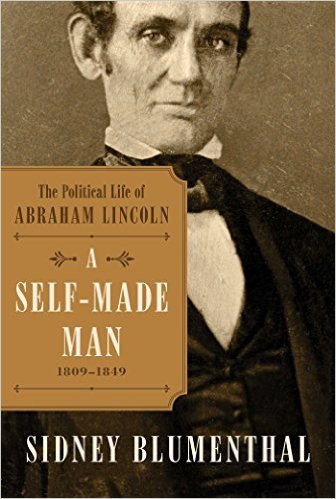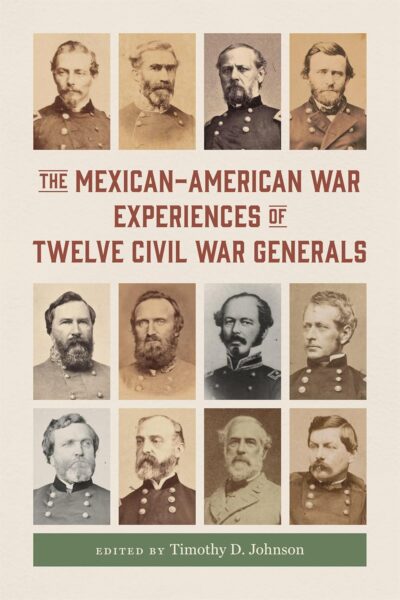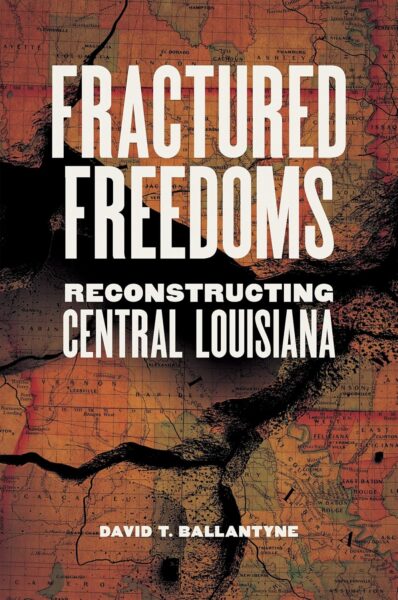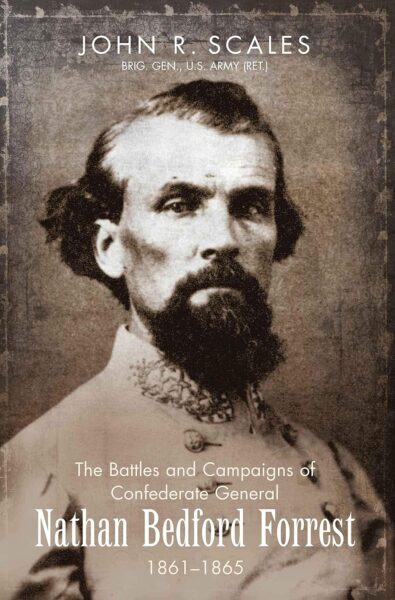Protecting the Flank at Gettysburg: The Battles of Brinkerhoff’s Ridge and East Cavalry Field, July 2-3, 1863 by Eric J. Wittenberg. Savas Beatie, 2013. Paper, ISBN: 1611210941. $16.95.
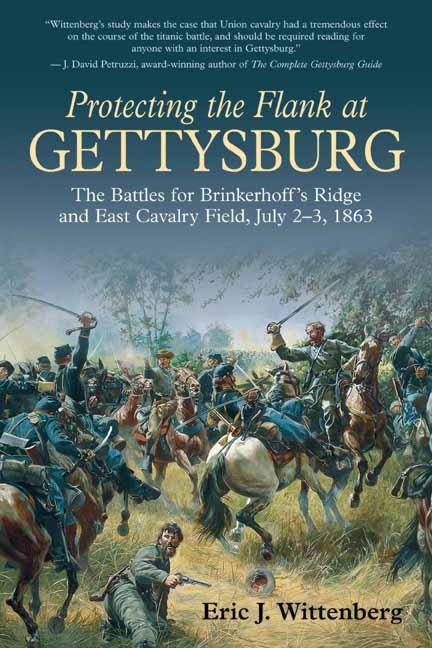 Clausewitz tells us “war is nothing but a duel on a larger scale. Countless duels go to make up war.” We can go one-step further in that countless duels make up a battle, especially larger battles. Historians such as Eric J. Wittenberg understand this and with a seemingly over-analyzed battlesuch as Gettysburg, he continues to find fresh ways to expose more about a duel we all thought we knew. In Protecting the Flank at Gettysburg, Wittenberg focuses entirely on the battles for Brinkerhoff’s Ridge (July 2) and East Cavalry Field (July 3), three and a half miles east of Gettysburg. In the forward, Edward G. Longacre points out that there are plenty of books and articles covering these battles, “but most have given it limited coverage, preferring to view it as a minor facet of a great campaign” (xvi). Wittenberg also points out correctly that “most battlefield tours today ignore them unless coverage is specifically requested” (130). Yet, there is a strong demand for interpreting these battles. During the sesquicentennial of East Cavalry Field this year, I stood in a downpour of rain with upwards of 1,000 people, listening to Park Rangers explain the events of that day. Thus, an updated edition of Wittenberg’s book this year is timely and appreciated.
Clausewitz tells us “war is nothing but a duel on a larger scale. Countless duels go to make up war.” We can go one-step further in that countless duels make up a battle, especially larger battles. Historians such as Eric J. Wittenberg understand this and with a seemingly over-analyzed battlesuch as Gettysburg, he continues to find fresh ways to expose more about a duel we all thought we knew. In Protecting the Flank at Gettysburg, Wittenberg focuses entirely on the battles for Brinkerhoff’s Ridge (July 2) and East Cavalry Field (July 3), three and a half miles east of Gettysburg. In the forward, Edward G. Longacre points out that there are plenty of books and articles covering these battles, “but most have given it limited coverage, preferring to view it as a minor facet of a great campaign” (xvi). Wittenberg also points out correctly that “most battlefield tours today ignore them unless coverage is specifically requested” (130). Yet, there is a strong demand for interpreting these battles. During the sesquicentennial of East Cavalry Field this year, I stood in a downpour of rain with upwards of 1,000 people, listening to Park Rangers explain the events of that day. Thus, an updated edition of Wittenberg’s book this year is timely and appreciated.
The book contains five chapters, a conclusion, and five appendices, one of which is substantial. The first chapter is the shortest amounting to a “calm before the storm” perspective for some of the Union participants. Here, Wittenberg introduces what amounts to the overriding thesis in the book—“The second and third days of the battle of Gettysburg marked [Brig. Gen. David M.] Gregg’s most important contribution to the Army of the Potomac” (3), a point he drives home several times throughout the work.
Chapters two through four introduce more commanders on both sides and cover the battles for Brinkerhoff’s Ridge and East Cavalry Field, providing much of the meat. It is worth analyzing Wittenberg’s narrative style, as it defies classification. It is immediately apparent that he provides a window into the higher levels of leadership (e.g., Gregg and his counterpart Jeb Stuart) down to the fighting soldier. Often, Wittenberg quotes the participants about their experiences, which results some very raw accounts—“It is yelling, shooting, swearing, cutting, fight, fight-all fight. The ranks are being rapidly thinned. Horses and men are being shot down like dogs” (80). Some quotes are much more graphic, but Wittenberg does not attempt to censor them or embellish the gruesomeness of combat. Mixed in is topographical analysis, as he continuously points out what the leaders and participants could see from their vantage points, as well as what features were important. For example, concerning the stone wall at Brinkerhoff’s Ridge, “This was the key to the entire position. If the Confederates could hold the stone wall, Gregg’s entire position would become untenable” (28), referring to a wall that was unfortunately “obliterated by the property owner in 2008” (164). Or, “Although the heavy woods screened Stuart’s advance from probing Union eyes, they also prevented the Confederates from seeing the Federal brigade posted at the intersection of the Hanover and Low Dutch roads” (46). In addition, there are countless mini-biographies of officers, providing information on their education and battle experience. For example, Wittenberg gives background on Captain William E. Miller (104) before describing Miller’s charge during the height of the battle (105-108). The biographical detours are natural, conjuring just enough interest in the participants to make the reader care about their fate.
From a contextual standpoint, Wittenberg emphasizes several times that the duel at Brinkerhoff’s Ridge resulted in tying up some “1,400 combat-hardened veterans” that “might well have tipped the scale in the desperate struggle for Culp’s Hill” on day two of Gettysburg (30). Thus, when the Union army abandons the stone wallthat night after fighting so hard for it, the reader understands that this smaller battle had a direct impact. Likewise, on East Cavalry Field, Wittenberg does a thorough job of demonstrating how Union artillery and smaller groups of cavalry affected the final grand charge by the Confederates, attacking the flanks and slowing its momentum before smashing into the smaller 1st Michigan led by Gen. George Custer. Wittenberg’s deconstruction of a 15- to 20-minute event guides the reader to understanding all the various components that went into blunting such a massive charge, as opposed to just envisioning two masses of cavalry smashing into each other and one winning, a common narrative for East Cavalry Field.
When I asked Wittenberg about his narrative style and how he would classify it, he answered simply, “I write about what interests me” and “I like to let the soldiers tell the story.” Fortunately, Wittenberg’s interest matches those of many military history enthusiasts, as he answers key questions—What did these men know? What were their orders? What could they see? What was their prior experience? What drove them forward? This is battle narrative at its finest, and military historians from all periods should take note of Wittenberg’s work, as he demonstrates how we still have much to glean from seemingly oversaturated battles.
Chapter five is the most lopsided part of the book. Entitled “The Union Cavalry’s Finest Moment,” Wittenberg provides quote upon quote by Union participants on how well they performed, sprinkled with his own analysis. The series of victory laps becomes a little tiring, especially since there are much fewer quotes by Confederate participants. Perhaps this has more to do with a lack of material for the Confederate perspective, but even such a statement would have added value to the chapter.
There are several new and enhanced appendices with new meat for readers. Appendices A and B provide a standard order of battle for both sides, but it is appendix C where the added content of this new edition is most apparent. Here, Wittenberg dedicates nearly 20 pages addressing Tom Carhart’s Lost Triumph: Lee’s Real Plan at Gettysburg—and Why It Failed (2005). For those unfamiliar, Carhart believes Lee had a plan to coordinate attacks between Pickett’s Charge and Stuart’s cavalry, which if executed correctly, could have won the battle for Lee. Wittenberg believes that Stuart’s orders were simply to protect Ewell’s left flank and harass the enemy if the opportunity arose (this brief summary does not do justice to both sides of the debate). Wittenberg makes his case by quoting at length from Carhart’s work in an attempt to give as much context as possible. The result is twofold, as the reader sees that Wittenberg is trying to be fair and let Carhart speak for himself, but the reader can also see the flimsiness of his theory. Wittenberg successfully deconstructs Carhart’s argument from just about every angle pointing out there is no proof of such a plan, and the context of the battle, the military practice of the day, and the terrain just does not support it. The lengthy excerpts of Carhart’s work coupled with Wittenberg’s analysis make this book worth the cover price. The only thing I would add to the debate is that Lee’s “real plan” is so convoluted and complex—requiring everything to go right with a sort of satellite-like view of the Union lines—thatit is the complete opposite of one of our cherished principles of war—simplicity.
In the 22-page driving tour, Wittenberg has updated it with GPS coordinates and changes in terrain and features (e.g., new visitor center). The tour is superb, as Wittenberg has structured it in a chronological fashion, continually bringing the reader’s attention to what participants could and could not see from their vantage points. For example, at one stop, Wittenberg points out “that you cannot see the position of Stuart’s headquarters due to the lay of the land. This means that Stuart also could not see the fighting taking place” (171). In addition, Wittenberg provides context to the monuments, and the buildings present for the battle. This resulted in several revelations throughout the driving tour. For example, most visitors looking at the 1st New Jersey Cavalry monument might capture a straightforward photo such as this.
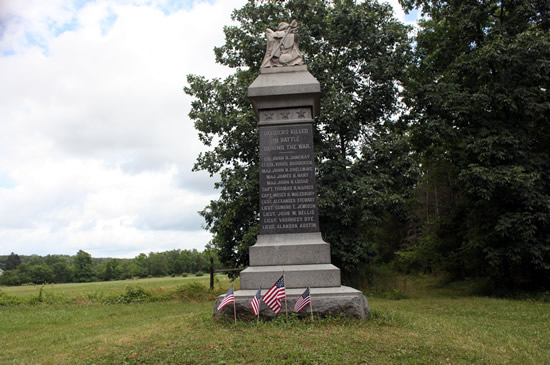
However, with Wittenberg’s driving tour, the visitor will recognize the Rummel farm in the distance—a building the 1st NJ paid dearly fighting over—and capture a more meaningful photo.
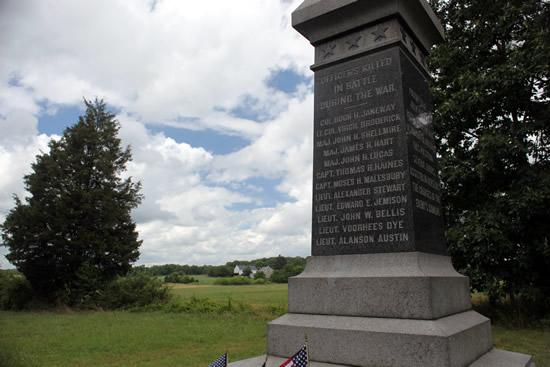
As for other aspects of the book, the physical version uses footnotes instead of endnotes, something very appreciated. Unfortunately, the Kindle version only provides Kindle locations instead of page numbers. Throughout the work are 41 period photos, mostly portraits, 7 maps, and 4 paintings. The maps are crucial to understanding the ebb and flow of the fighting and match up nicely to the modern-day battlefield, meaning you can find this stuff on a Google Map. The paintings do not contain any sort of interpretation and the black and white format of the printing makes them difficult to see. Finally, the book contains 15 photos by the author of monuments and other features you would see on the battlefield today, which are very helpful during the driving tour.
The late military historian John Keegan once said that historians “are committed to controversy as a way of life.” We could add the media to that list. As such, the Carhart-Wittenberg debate is likely to rage for a while. Yet, anyone who reads Wittenberg’s work and visits the battlefield will easily realize that Carhart’s theory is pure conjecture, something more fit for a message board debate than a scholarly one. That aside, potential readers should keep in mind that Wittenberg has produced a masterful battle book complete with a unique narrative, maps, historiographical debate, and a driving tour. Wittenberg wrote this book for people who want to understand the battle and its participants, as well as visit and interpret the battlefield. Anyone interested in Gettysburg will benefit from this deeper dive into one of the countless duels that make up this battle.
Scott Manning holds a B.A. in Military History and is current a graduate student at American Military University. You can follow his blog at Historian on the Warpath.

